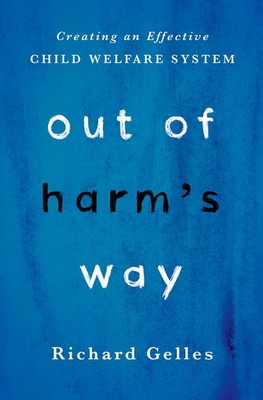Out of Harm's Way: Creating an Effective Child Welfare System

Out of Harm's Way: Creating an Effective Child Welfare System
Despite many well-intentioned efforts to create, revise, reform, and establish an effective child welfare system in the United States, the system continues to fail to ensure the safety and well-being of maltreated children. Out of Harm's Way explores the following four critical aspects of the system and presents a specific change in each that would lead to lasting improvements. - Deciding who is the client. Child welfare systems attempt to balance the needs of the child and those of the parents, often failing both. Clearly answering this question is the most important, yet unaddressed, issue facing the child welfare system.
- Decisions. The key task for a caseworker is not to provide services but to make decisions regarding child abuse and neglect, case goals, and placement; however, practitioners have only the crudest tools at their disposal when making what are literally life and death decisions.
- The Perverse Incentive. Billions of dollars are spent each year to place and maintain children in out-of-home care. Foster care is meant to be short-term, yet the existing federal funding serves as a perverse incentive to keep children in out-of-home placements.
- Aging out. More than 20,000 youth age out of the foster care system each year, and yet what the system calls "emancipation" could more accurately be viewed as child neglect. After having spent months, years, or longer moving from placement to placement, aging-out youth are suddenly thrust into homelessness, unemployment, welfare, and oppressive disadvantage. The chapters in this book offer a blueprint for reform that eschews the tired cycle of a tragedy followed by outrage and calls for more money, staff, training, and lawsuits that provide, at best, fleeting relief as a new complacency slowly sets in until the cycle repeats. If we want, instead, to try something else, the changes that Gelles outlines in this book are affordable, scalable, and proven.
PRP: 274.79 Lei
Acesta este Prețul Recomandat de Producător. Prețul de vânzare al produsului este afișat mai jos.
219.83Lei
219.83Lei
274.79 LeiLivrare in 2-4 saptamani
Descrierea produsului
Despite many well-intentioned efforts to create, revise, reform, and establish an effective child welfare system in the United States, the system continues to fail to ensure the safety and well-being of maltreated children. Out of Harm's Way explores the following four critical aspects of the system and presents a specific change in each that would lead to lasting improvements. - Deciding who is the client. Child welfare systems attempt to balance the needs of the child and those of the parents, often failing both. Clearly answering this question is the most important, yet unaddressed, issue facing the child welfare system.
- Decisions. The key task for a caseworker is not to provide services but to make decisions regarding child abuse and neglect, case goals, and placement; however, practitioners have only the crudest tools at their disposal when making what are literally life and death decisions.
- The Perverse Incentive. Billions of dollars are spent each year to place and maintain children in out-of-home care. Foster care is meant to be short-term, yet the existing federal funding serves as a perverse incentive to keep children in out-of-home placements.
- Aging out. More than 20,000 youth age out of the foster care system each year, and yet what the system calls "emancipation" could more accurately be viewed as child neglect. After having spent months, years, or longer moving from placement to placement, aging-out youth are suddenly thrust into homelessness, unemployment, welfare, and oppressive disadvantage. The chapters in this book offer a blueprint for reform that eschews the tired cycle of a tragedy followed by outrage and calls for more money, staff, training, and lawsuits that provide, at best, fleeting relief as a new complacency slowly sets in until the cycle repeats. If we want, instead, to try something else, the changes that Gelles outlines in this book are affordable, scalable, and proven.
Detaliile produsului









